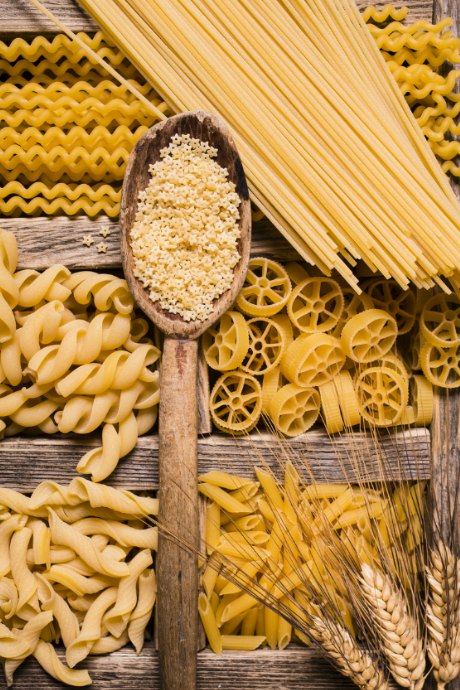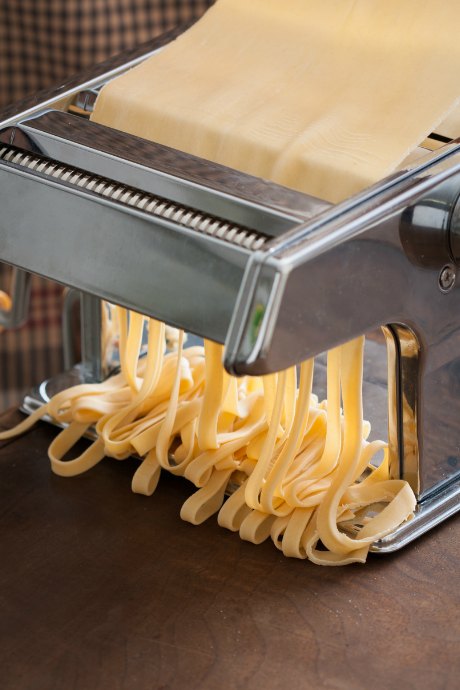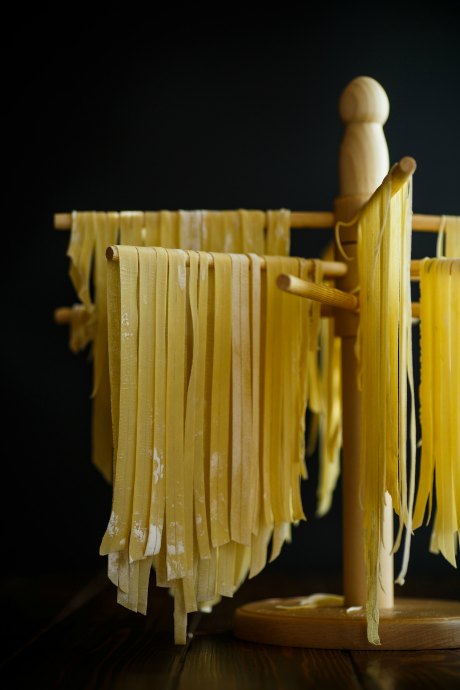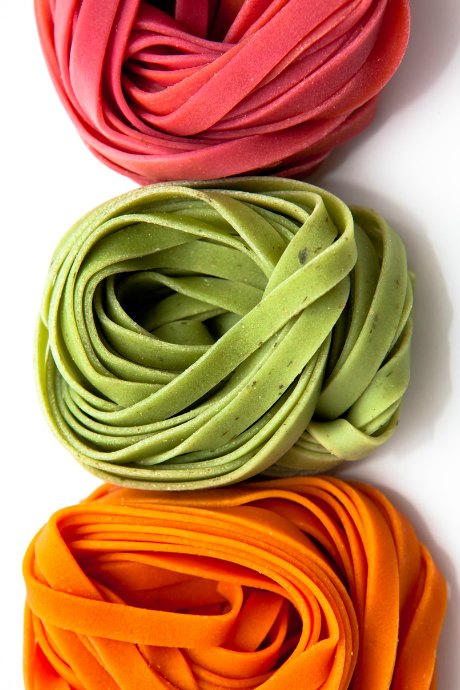Homemade Pasta Dough Is Worth the Work
Posted by Julie on Sep 3rd 2018
Over the years, we’ve explored many dishes that we often buy pre-made, but that can be made from scratch nearly as easily. From granola to gravy, and from pickles to pizza, we’ve shown our readers they can do more in the kitchen than they ever thought possible.
Our latest project is homemade pasta dough. We won’t deny that mixing, kneading, rolling, and cutting fresh pasta is a chore. But homemade pasta is surprisingly straightforward, and the results are worth it.
Homemade Pasta Dough: Eight Key Tips
Before we jump into pasta dough recipes and product recommendations, it’s helpful to understand the ins and outs of fresh pasta. In our research, we devoured this article from Serious Eats that covers the details of making pasta dough from scratch. It’s worth reading the whole piece, but we’ll highlight a few of the key points here.
1. Fresh Pasta and Dry Pasta Are Different
This fact is the top reason to try making fresh pasta. While you can pick up a box of linguine at the grocery store, it is made differently from fresh linguine. Dry pasta consists primarily of flour and water. It takes longer to cook, and it is meant to be paired with heavier sauces.

Fresh pasta consists primarily of flour and eggs. It is light and delicate, and it cooks in about two minutes. Marinara or meat sauce will crush it. Choose light and delicate sauces to complement the texture of the pasta.
2. Choose Your Flour Based on Desired Texture
All flours are not created equal. Whether you’re making bread, pizza, or pasta, the composition of your flour affects the mixing and kneading process, and makes a difference in the appearance, flavor, and texture of your finished product.
In pasta dough recipes, you’ll see these three types of flour most frequently:
- 00 flour - more refined, smaller grains, lower protein
- Semolina flour - less refined, larger grains, higher protein
- All-purpose flour - right in the middle
You can experiment with various combinations if you like, but the good news is that all-purpose flour works perfectly well for homemade pasta dough. It’s a fine place to start.
3. Know Your Egg-Flour Ratio
On the other hand, the protein and fat and water content of eggs make them a bit trickier than flour. Without going into the same level of detail as Serious Eats, a lot of experimentation went into determining this ratio: For every five ounces of flour, add one whole egg and two yolks.

Of course, you may choose to follow a recipe that calls for different proportions, especially if oil is one of the ingredients. But the above ratio results in a pasta dough that’s easy to work with and has good taste and texture.
4. By Hand or By Machine?
Mixing and kneading your dough will take a while. You can use a food processor or a stand mixer with a dough hook to automate the process.
You can also mix and knead right on your counter top, without a pasta machine. Serious Eats recommends this method because it allows you to adjust the amount of flour and liquid in your dough as necessary. We especially love their idea to use a spray bottle to moisten dough that’s too dry.
5. Let It Rest
After kneading, most recipes will call for letting the dough rest for at least 30 minutes. This allows the flour to fully absorb the liquid and gives the gluten strands time to relax (so your dough will roll more easily). Serious Eats notes that resting isn’t entirely necessary, but it will improve the texture of your pasta.
6. Fold, Roll, Repeat
Serious Eats refers to this process as laminating, and we think that term illustrates it well. You don’t get to send pasta dough through the rollers once and be done with it. It takes several passes at increasingly thinner settings before you’re ready to cut pasta, either with the machine or by hand.

The best tip we found was to check those settings carefully before passing dough through the rollers. After you’ve folded the dough in three parts, you’ll need to move the rollers back to a wider setting to accommodate the thickness of the dough.
7. Lay Flat or Hang to Dry?
More good news: there isn’t a right way to dry your pasta before cooking. With long strips or strands, you can curl them into nests or hang them from wooden dowels or even plastic hangers. Either way, be sure to dust them liberally with flour to keep the pasta from sticking together. This step is especially important if you’re working in a humid kitchen.

8. A Watched Pot Is Key
As we noted in the first point, fresh pasta cooks in a snap. Don’t leave the kitchen. Don’t even leave the stove. Watch your pasta and the clock, and taste it after only a minute in boiling water. Serious Eats explains that fresh pasta actually needs to cook in order to firm up, but it doesn’t need more than a few minutes.
Homemade Pasta Dough: Basic Recipes
Although you can use the egg-flour ratio explained above, we understand if you’d feel more comfortable following a tried-and-true recipe. We found three recipes from trusted sources that are worth a shot.
First, check out this recipe from Giada deLaurentiis. She uses a mixture of semolina and all-purpose flours, along with two whole eggs and three egg yolks. She doesn’t add salt, but we’d recommend a pinch.
Next, this recipe from Bon Appetit includes all-purpose flour and whole eggs, along with olive oil and salt. We like how this recipe calls for mixing by hand initially, then transferring the dough to a stand mixer. It’s a good compromise that will allow you to add flour or moisten the dough as needed before starting to knead.

Finally, this recipe from Leite’s Culinaria is similar to the Bon Appetit recipe, except he uses all 00 flour or a combination of 00 and semolina. It’s also a good resource for ways to add color to your pasta dough: tomato sauce, pureed spinach, grated beets, and even squid ink. Yes, squid ink — it has a subtle briny flavor that pairs well with seafood.
 Free shipping over $49
Free shipping over $49










